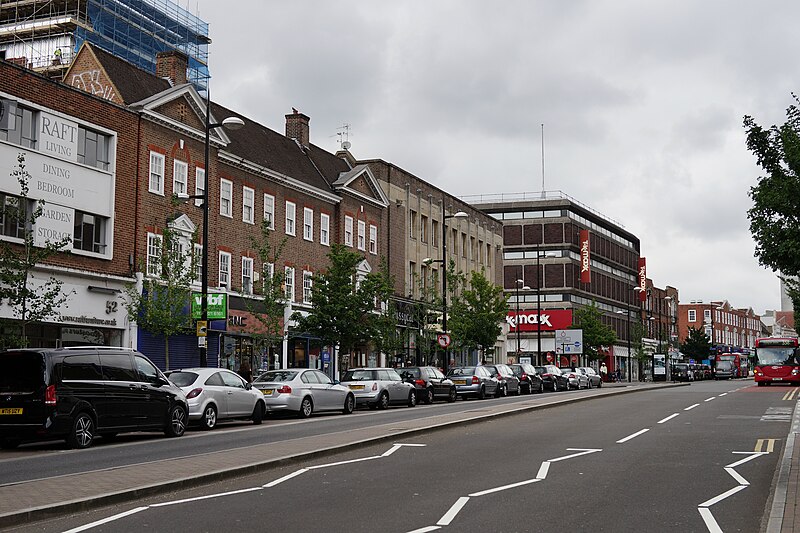The number of adult and children food bank parcels distributed in London has now returned to, and even eclipsed, pandemic levels.
Camden has experienced the largest percentage increase in parcel distribution in recent years, after a spike in the number of adult and children food bank parcels during the Covid-19 crisis.
Between 2018 and 2024, the number of parcels increased from roughly 6000 in 2018 to about 66,000 in 2024, representing a monumental 1000% increase in a six-year period.
The food bank crisis is compounded by the fact that food parcels distributed in Camden reached a high of only 28,000 during the Covid-19 pandemic.
Yet since recovering from the pandemic London residents are increasingly feeling the brunt of the cost of living crisis, as more and more Londoners now require food bank services.
Although Camden represent the highest increase in food bank parcels over the aforementioned time period, this steep increase is not an anomaly.
The number of adult and children parcels distributed in London boroughs has increased steeply across the board.
Kate Sing’ombe, foodbank manager of Bromley Borough Foodbank, said: “Over the last 14 years we have seen usage increase massively – last year in Bromley we supported almost 8000 individuals.
“This is the most parcels we have every given out in a year and is a 50% increase on 5 years ago.”
Jenna Fansa, head of fundraising at Hackney Foodbank, said: “In the past 12 months, demand at Hackney Foodbank has increased by 42%.”
The increased usage of food banks has been met by increased shortages in food and essential items.
Jon Taylor, Streatham hub manager for Norwood and Brixton Foodbank, said: “We are increasingly seeing shortages of food on our shelves which results in us having to restrict the amount of food we give out.
“We are no longer able to give out coffee for instance as it’s too expensive to buy.
“We are always clear to our referral agencies only to issue vouchers if it is an emergency.”
Rachel Dimond, CEO of Barnet-based charity My Yard, said: “It has also become harder for some food banks to meet the demand due to increased red tape for food storage.
Fansa added: “We’re constantly running out of certain foods and having to shop or issue appeals for donations.”
The data indicates that despite the general increase in distribution centre, more may need to be built to make up for the shortages
What can be considered alarming is the change in the demographic of the average food bank user.
Food bank representatives commented on how more and more they have witnessed an increase in working professionals and pensioners requiring food bank support.
Taylor said: “Over the years we have seen more people that are in employment come to us to help.
Fansa added: “Between 2023 and 2024 the number of over 65-year-olds requiring support from Hackney Foodbank increased by 95% and the number of single parent households needing support increased by more than 50%.”
In order to match the increasing demand for food banks, volunteers have played and continue to play a key role in administering support.
Sing’ombe said: “We currently have 182 amazing volunteers all of whom are motivated to making sure local residents shouldn’t have to go without.
“Many want to help their neighbours, and some have been in a position of needing a food bank in the past.”
Taylor added: “Although we have lots of regular helpers, new volunteers are always needed in specific areas.”
Dimond said: “We need better funding for long term staff and leaders as it should be a well-paid and rewarded job.”
The stats provide a dim view for the future, especially given the Covid -19 crisis where food bank usage skyrocketed across London.
Between 2018 and 2024, the number of total number of foodbank parcels increased by just over 230% from just under 140,000 to just over 450,000.
When asked how long the current system can continue without collapsing Taylor said: “If the numbers we are seeing continues to increase however, there may be a limit to the help we can provide and then cuts would have to be made which would have a huge impact.
Dimond added: “A lack of infrastructure, systems and planning cause failure.
“Their needs to be more investment in this.
She has called for better long-term strategic partnerships between businesses and the charity sector and investment into database, research, systems and staff and venue funding.
According to Dimond, the alarming rate of food bank usage means this is too large to be a grass roots led industry in terms of infrastructure.
Hackney food bank and Bromley borough food bank are a part of The Trussell Trust who provide support to more than 1,300 food banks.
The Trussell Trust have outlined several factors as necessary for reducing the number of people needing to use food banks.
Among them are scrapping the two child limit for government support and introducing essentials guarantee so Universal Credit always covers the basic needs of food, household bills and travel.
The hope for the future is that food banks are no longer needed because everyone has sufficient income to choose and purchase the food they need but with skyrocketing food parcel levels.
However, this seems to be a distant dream.
Featured image credit: Peter Trimming licenced under Creative Commons


Join the discussion